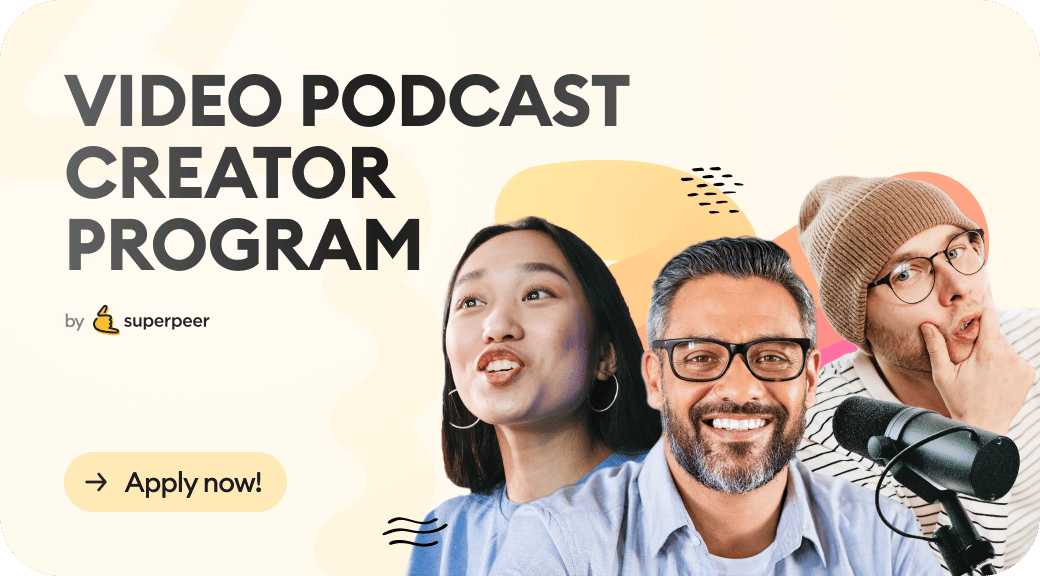
Illustration by Garrett Golightly
Breaking Down Deepfakes
Earlier this month, many of us were thrown by the viral TikTok of 22-year-old VFX creator Curt Skelton. In the video, Skelton claimed to be AI-generated, and his voice was the altered sound of a woman’s speech. The woman in the video was another visual-effects TikToker named Zahra Hussein. Turns out, neither of them were AI-generated.
But most people bought it, earning Skelton upwards of 19 million views of the video.
The TikTok, made in jest to poke fun at the increasingly common idea that AI is replacing artists, illustrates just how little the general public understands about the convincing potential of deepfakery. We fell for it, hook, line, and sinker.
And though Skelton’s video was a stunt, the fact that he pulled it off could be foreboding. According to a recent report by the Europol Innovation Lab, as much as 90% of online content will be AI-generated or manipulated by 2024.
So, if that’s where we’re headed, how do we suss out truth from fiction? Let’s break down what deepfakes are, how they relate to AI, and how this AI-enabled future might impact creators.
Deepfakes
A portmanteau of “deep learning” and “fake,” deepfakes use deep learning artificial intelligence to replace the likeness of one person with the likeness of another in a video. All deepfakes are AI, but not all technology using AI is a deepfake—like Siri or AI-powered robots.
“Deepfake” entered the mainstream lexicon in 2020 when the viral TikTok of DeepTomCruise took over the internet. Since then, we’ve seen other stars including Robert Pattinson and Keanu Reeves get the same treatment.
And despite TikTok having explicit guidelines against deepfakes, they’re still there (see: deepfake Zelensky).
None of those previous examples of deepfakes are real people. But Curt Skelton is. It’s not easy to tell the difference between the two, but there are a few digital literacy tools we can employ:
Most deepfakes feel “off.” The face is too smooth, or there are weird cheekbone shadows. The eye and mouth movements seem disjointed and forced, and the hair looks fake—that’s a solid tell. According to The Next Web, current deepfake technology struggles to maintain the original look of real hair.
When intuition fails, do your research. Search for keywords used in the video to see if you can find a transcript of what’s being said. News outlets often cover quotes from high-profile politicians and celebrities within a couple days. Take a screenshot of the video and do a Google reverse image search. This can reveal whether an original version of the video exists, which you may then compare to the suspicious one.
Still, even when we implement those tactics, deepfakes can be hard to discern.
Which is where regulation comes into play. The creator industry needs a more sustained and nuanced regulatory approach that better manages the use and misuse of deepfakes and AI-generated media.
Because there could be serious implications. While some creators are using AI to generate images of their own likeness for creative projects, many creators see AI as a threat to their work. Just look to DALL-E, a website that produces AI-generated art from text prompts. It’s getting criticized by the art world, which is frustrated that DALL-E has been trained from real artists' work.
With the widespread trend of shrinking art department budgets, a real threat of AI becoming the more economical option when compared to real, human talent emerges. And while organizations designed to empower artists to remove their work from AI-generated services are hard at work, the moral question of whether AI art should replace artists in a way that remains valid.
And on the legal side, should deepfakes and AI generators require consent from the creator they emulate in ways that parody does not? Should creators be required to label all deepfakes and AI? How might all these hypothetical rules be implemented and enforced?
Our Take
While studies have found that both humans and AI have their own blind spots in differentiating a deepfake from a real video, AI also brings more opportunities to creators and VTubers. It seems that the way forward is “both, and.” While AI tech is cheap and convenient, humans have intuition that tech doesn’t, and a more robust creator economy will require human and AI collaboration to move forward.

Sponsored by Superpeer
Take your podcast live with Superpeer

Your superfans love the videos you publish. Don’t you think they’d also love a behind-the-scenes look at how that content is created?
Superpeer is a new tool that allows creators to easily set up paid live streams—and they’re looking for creators to test out their new offering with them.
If you’re recording interviews, news, monologues, or Q&A, check out their creator program. Accepted creators will receive a sponsorship ranging from $2,000–$5,000 a month for a 3-month commitment.
In the program, you’d use Superpeer to stream live broadcasts of your content production process—whether it’s interviews or “director’s commentary” on your past videos. After that, you can repurpose it as usual—edit, and publish on Youtube, Tiktok, or other platforms.
Take your podcast live — go here to apply.

🤝 Creator Support
Publish Press readers share a problem they're facing and creators Colin & Samir respond with their advice.
Q: I’m a creator who talks about UX design mostly for people who want to make a career change and work in the UX field.
But I quit my job to pursue a creator career and now I see myself wanting to share more about being a creator rather than talking about how others can make it in a UX career. Mostly because I don’t identify myself with the topic anymore.
I have tried to post some content on the topic and got good answers, but my dilemma is: do I pivot my focus, start a new side project, or create a category inside the current one?
A: If you still have a passion for UX design, you should continue making that content while incorporating new videos on being a creator. Kind of like chunbuns and TechLead, who do a mix of lifestyle and tech.
However, if you truly don’t identify with it anymore, you should follow your interests. Here are a few things to keep in mind:
Dig deeper on what you want to say about “being a creator.” Do you want to cover the business side? Production side? Creative side? By honing in on what you want to share, you can develop a niche as strong as UX design that allows you to become a full-time creator.
When you first make the change, your views and followers may go down. And depending on how much of your income is based on brand deals, that take-home pay may decrease as well. If it’s what you really want to do, and you enjoy the process, it’ll be worth it. But be prepared if content revenue slows down and you have to pick up another source of income.
Facing a creator problem you want help with? Share it here→

🔥 Press Worthy
The Dislike button rarely affects recommendations on YouTube, research finds.
What it’s like to use TikTok in place of every Google search.
Emma Rogue went above and beyond with her Pop-Tart collab.
Creator Compass is looking to help content creators quickly find the products and tools that will grow their business. Share your insight with the startup here.*
The Sidemen Charity Match brought in over 17 million views.
Creators the Try Guys are jealous of.
The inner workings of a resale creator.
*This is sponsored advertising content.





